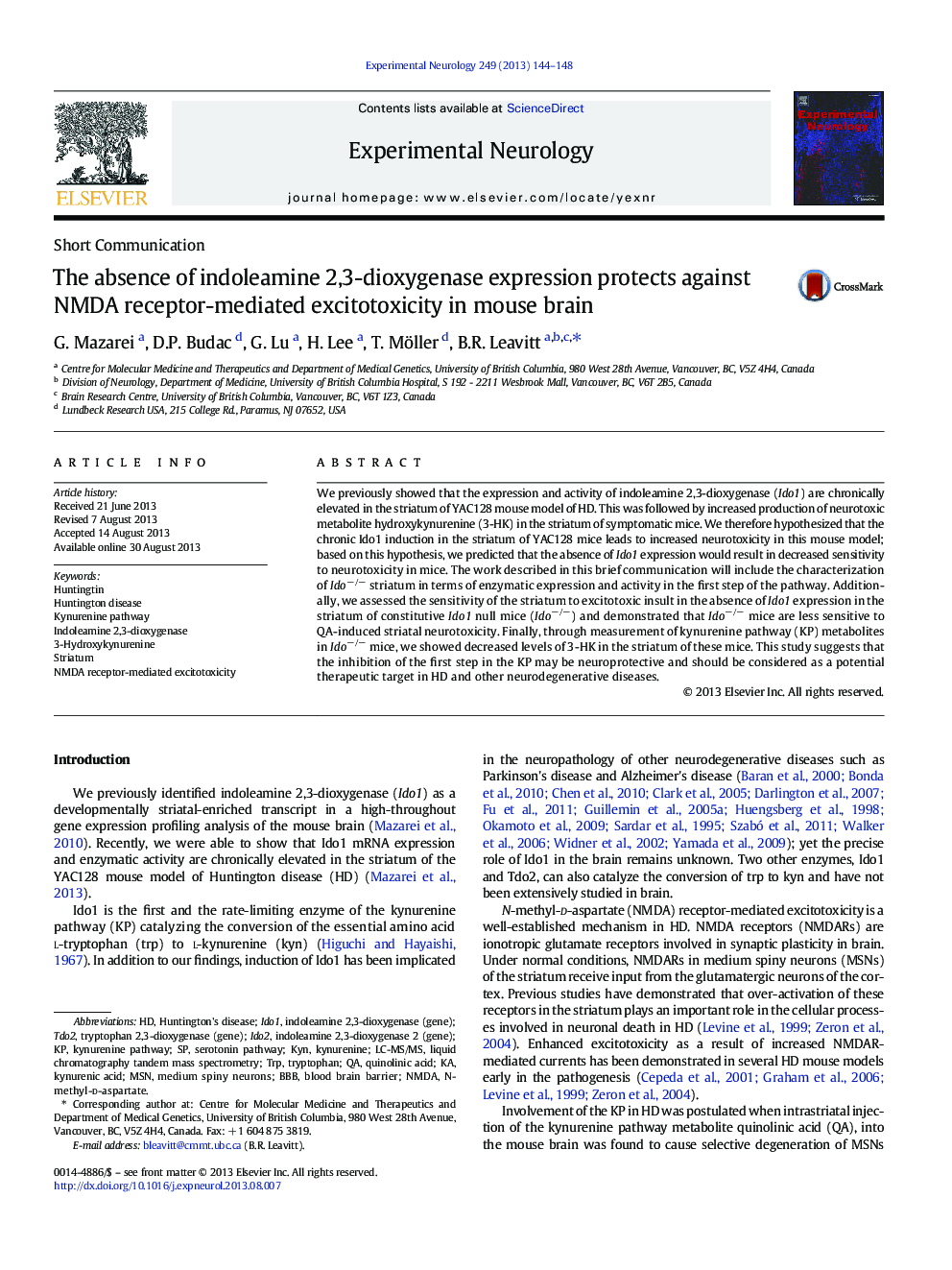| Article ID | Journal | Published Year | Pages | File Type |
|---|---|---|---|---|
| 6017998 | Experimental Neurology | 2013 | 5 Pages |
Abstract
We previously showed that the expression and activity of indoleamine 2,3-dioxygenase (Ido1) are chronically elevated in the striatum of YAC128 mouse model of HD. This was followed by increased production of neurotoxic metabolite hydroxykynurenine (3-HK) in the striatum of symptomatic mice. We therefore hypothesized that the chronic Ido1 induction in the striatum of YAC128 mice leads to increased neurotoxicity in this mouse model; based on this hypothesis, we predicted that the absence of Ido1 expression would result in decreased sensitivity to neurotoxicity in mice. The work described in this brief communication will include the characterization of Idoâ/â striatum in terms of enzymatic expression and activity in the first step of the pathway. Additionally, we assessed the sensitivity of the striatum to excitotoxic insult in the absence of Ido1 expression in the striatum of constitutive Ido1 null mice (Idoâ/â) and demonstrated that Idoâ/â mice are less sensitive to QA-induced striatal neurotoxicity. Finally, through measurement of kynurenine pathway (KP) metabolites in Idoâ/â mice, we showed decreased levels of 3-HK in the striatum of these mice. This study suggests that the inhibition of the first step in the KP may be neuroprotective and should be considered as a potential therapeutic target in HD and other neurodegenerative diseases.
Keywords
TrpIDO2TDO2IDO1MSNN-methyl-d-aspartateNMDA3-hydroxykynurenineLC-MS/MSStriatumkynurenic acidQuinolinic acidindoleamine 2,3-dioxygenaseHuntington's diseaseHuntington diseaseTryptophanKYNblood brain barrierBBBkynurenine pathwaymedium spiny neuronsHuntingtinliquid chromatography tandem mass spectrometrykynurenine
Related Topics
Life Sciences
Neuroscience
Neurology
Authors
G. Mazarei, D.P. Budac, G. Lu, H. Lee, T. Möller, B.R. Leavitt,
